The hunt season doors have burst open across the country and in some locations, snow already is falling! This is the best time of year. Here in Virginia, the mountains are phasing their lush green canopies into a majestic landscape of golds, reds and oranges. The chilly, frosty mornings are a welcome respite from the searing heat of August and we are all leaping at any opportunity to get out in the upland hunt field. But are you ready?
Sponsored by Syren USA
Being eager to get into the field and being ready to hunt successfully are not bound by law or some unsung credo. No. It’s something that you have to work at and be ready and willing to improve upon.
Ask yourself these questions:
Where are you hunting this season?
My absolute favorite is getting into an upland field over my shorthairs. Most of my season is spent chasing preserve birds with my Tempio Sporting 20 gauge. Typically, I’ll use a modified choke in the top and an improved cylinder in the bottom, the same set up that I’ll utilize on the sporting clays course. (I am still amazed at how many people do not pay attention to the chokes and ammo they are using for specific birds, much less getting out to pattern their gun.)
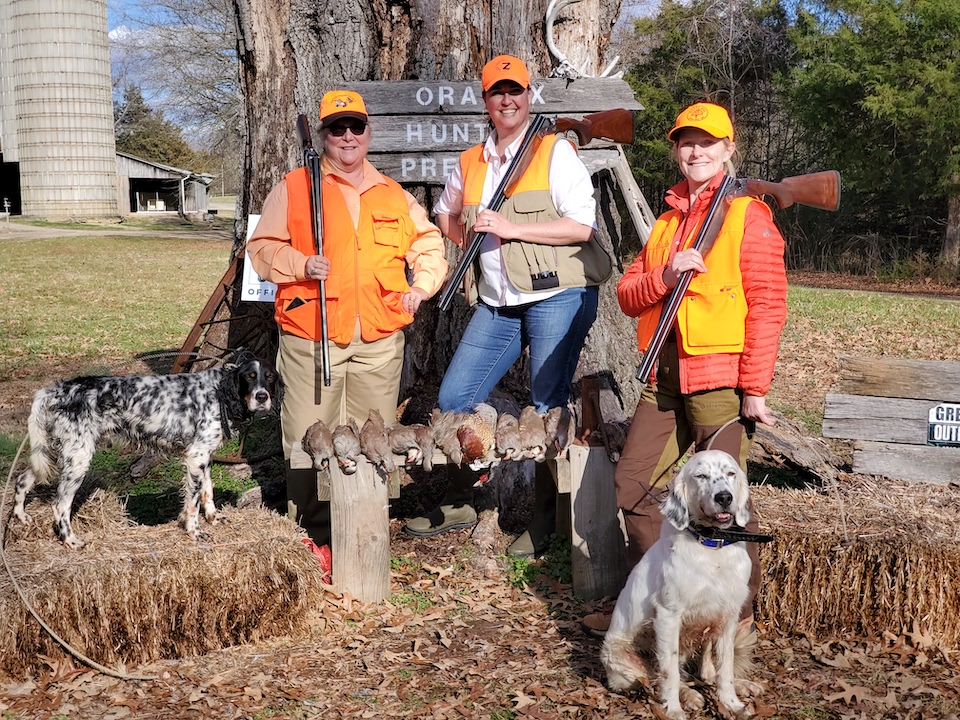
Before going after any quarry, you need to make sure that your chosen gun and ammo are well matched to your birds. How can one expect to add more birds to the bag if they don’t take the time to insure that are maximizing their advantage?
What game has caught your fancy?
For me, it’s pheasants, chukars, quail and any bird in season or on a preserve.
Have you done any scouting and is your equipment ready to go and in good working order?
After scouting for or booking hunts, it’s time to make sure your equipment is ready to go and in good working order.
There is a really good reason that most people prefer an over/under for upland hunting. It is quickly discernible if someone is safe and you can utilize two different chokes depending on the proximity of your bird. It’s also much more comfortable to carry around for hours versus an autoloader. Typically, I will set this gun with an improved cylinder in the bottom barrel and light modified in the top barrel. This will give a nice, open pattern for the bird on the initial flush and allow a shooter to reach out with the tighter pattern for the birds that have escaped the immediate vicinity.
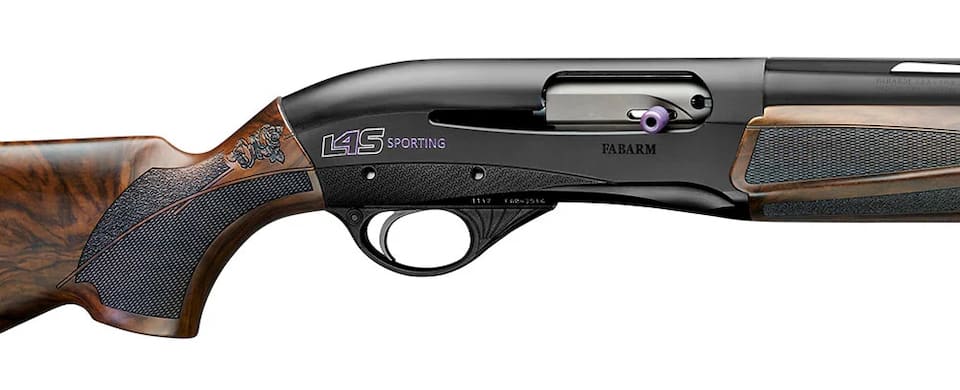
If you happen to have an autoloader, such as the Syren L4S, you can still mimic the dual barrel versatility of the over/under by simply staggering different shot loads. Using an improved cylinder choke will work nicely, especially if you use a heavier load, as the second shell which will allow you to reach out farther just as would if you had a tighter choke. The first shot, when the bird initially flushes should be your lighter load since the bird will be closer. Too often shooters choke their guns way too tight. It doesn’t do you any good if the dog has nothing to retrieve because you loaded a heavy shell with a tight choke and the bird was less than 30 yards away.
Don’t Forget Gun Fit
Have you taken the time to get your gun fitted to you? I’m always taken aback at the number of people that never bother to have their gun fitted. Since shotguns are a pointing gun and not an aiming gun, gun fit is paramount. Syren is more than happy to take the time to fit any of their guns to corresponding shooters. This is an invaluable service and they do it for FREE! While the alterations incur a fee, the actual fitting is not only free, but also, highly informative.
While on the topic of fitting, be sure to practice in your bird vest and hunting attire. You may be rudely awakened that your gear has caused your gun fit to suddenly go awry. Trust me when I say that you would much rather find out during practice instead of being frustrated in the hunt field.
Rules of Engagement
Now that you have your gun set up and your ammo ready, time to step up. When you are hunting with additional gunners, it is important that you “hold the line” and stay parallel with each other. This will allow each gun the maximum swing on a bird, safely. As soon as the dog(s) starts getting birdie, move quickly up to get in place. If the dogs are on pheasant, time is of the essence as a pheasant will happily try to outrun your dog before ever taking to the air. As everyone gets into position, know your “NO” zone. In other words, be sure you know where your other gunners are located, along with the guide, dogs and any additional obstacles.
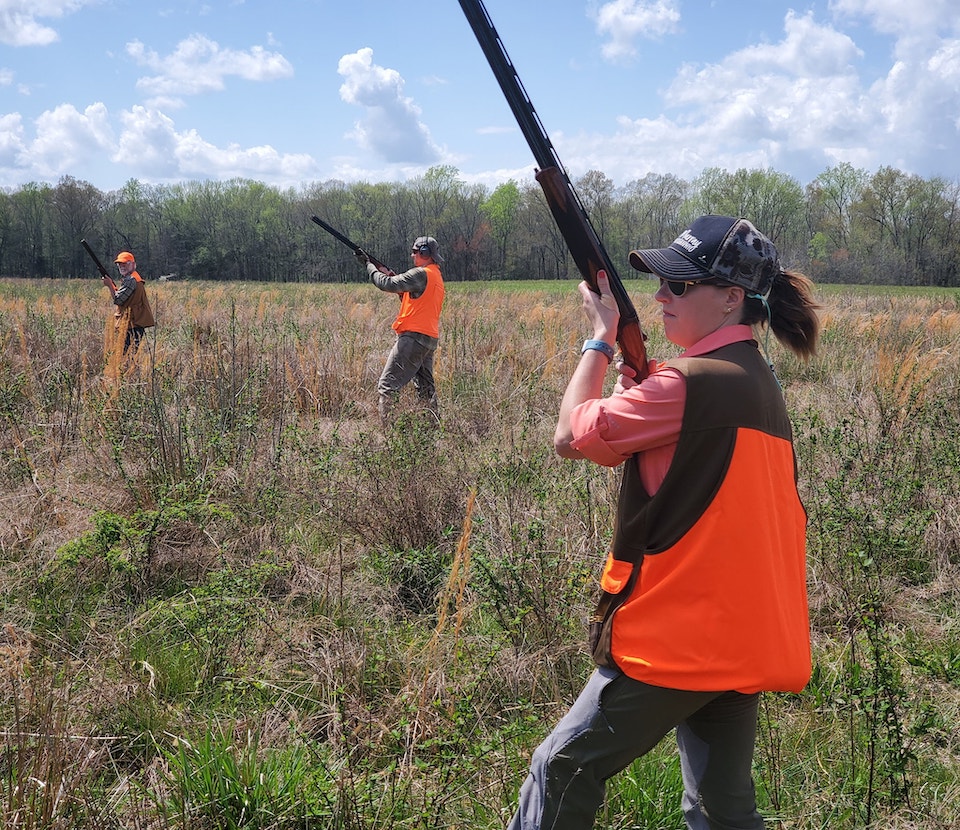
Once you are up to the point with the dogs, slow back down and utilize more of a crab walk. The worst thing you can encounter is a flushing bird when your offside foot is forward. You end up looking like you are doing some crazy new two step. Having the correct foot forward will allow you to move more quickly into position on the flush.
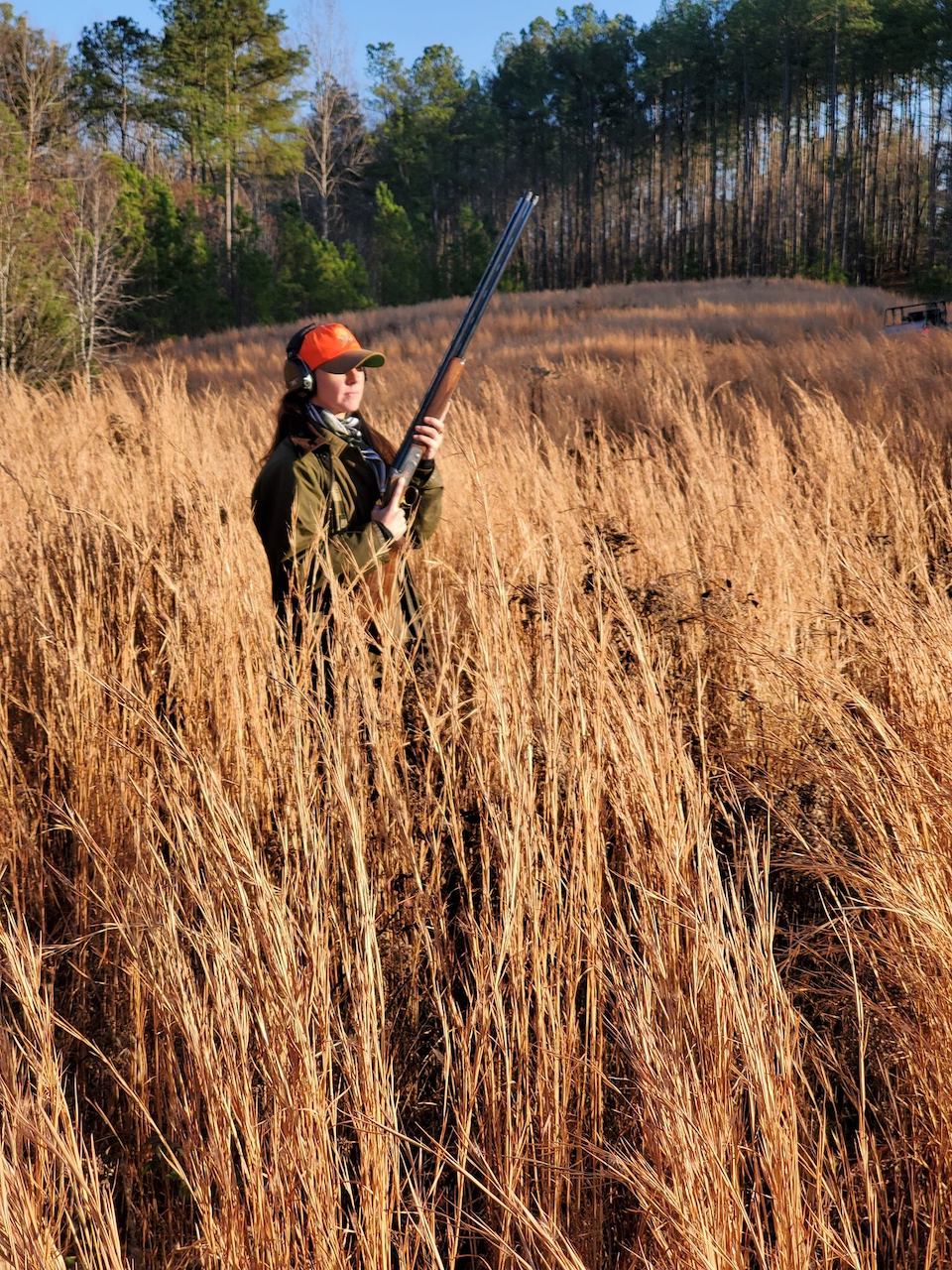
Look Up!
As the birds are about to flush, do NOT look intensely at the ground near the birds, at the dogs or try to hard scan the area. Birds, even pen-raised ones will fly up off of the ground and you need to be looking up to see them. Otherwise, the flurry and commotion of the flush will cause way too much eye jump and distraction. You want to utilize soft focus and gaze out allowing your peripheral vision to lightly scan just above the cover. It takes more effort and muscles in the eyes to switch from center vision to soft focus than it does to go from soft focus to center vision. Once the birds flush, your peripheral vision will catch the motion and quickly focus on one bird. Stay with that bird until it goes down. I warn students against looking at the flapping motion of the wings. It is the largest part of the bird but, trust me when I tell you to look at the head. It leads the bird and you will easily understand where the bird is flying and how to apply the correct lead, if needed.
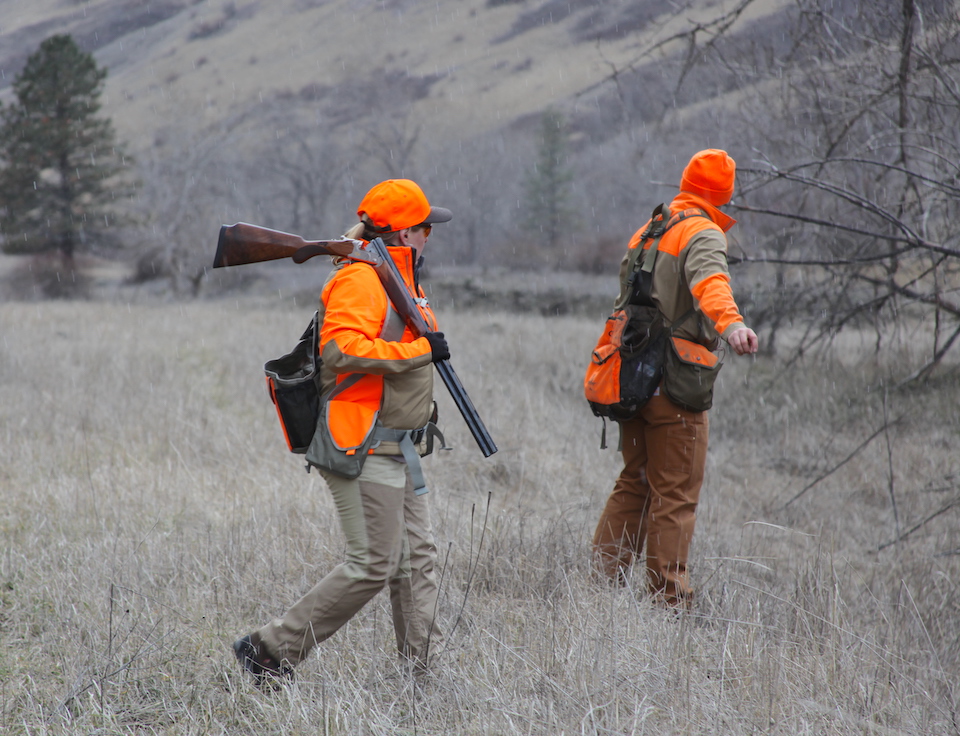
As you anxiously await the flush, be sure the muzzle of your gun is in your line of sight. This will allow you to simply and smoothly mount your gun to the bird in its flight path and quickly acquire the target.
When mounting, be sure to lean slightly forward so that you will be able to get the stock to your face first and shoulder second. Your eyes are in your head and therefor, take precedence over your shoulder.
Mounting the gun with an upright position will make you mount to your shoulder first and often causes a shooter to mount the gun twice, even three or four times before settling into the stock. Your gun needs to be an extension of your arms and eyes. You need to be comfortable walking with it, mounting it at a moment’s notice due to a fast or unplanned flush and so that you can enjoy greater success in the hunt field!
Finally, when you pull the trigger and the bird doesn’t come down, stay with that bird. Chances are that you put a few pellets into the bird but, not enough to immediately take it down. It’s important to always practice safe and respectful hunting practices.
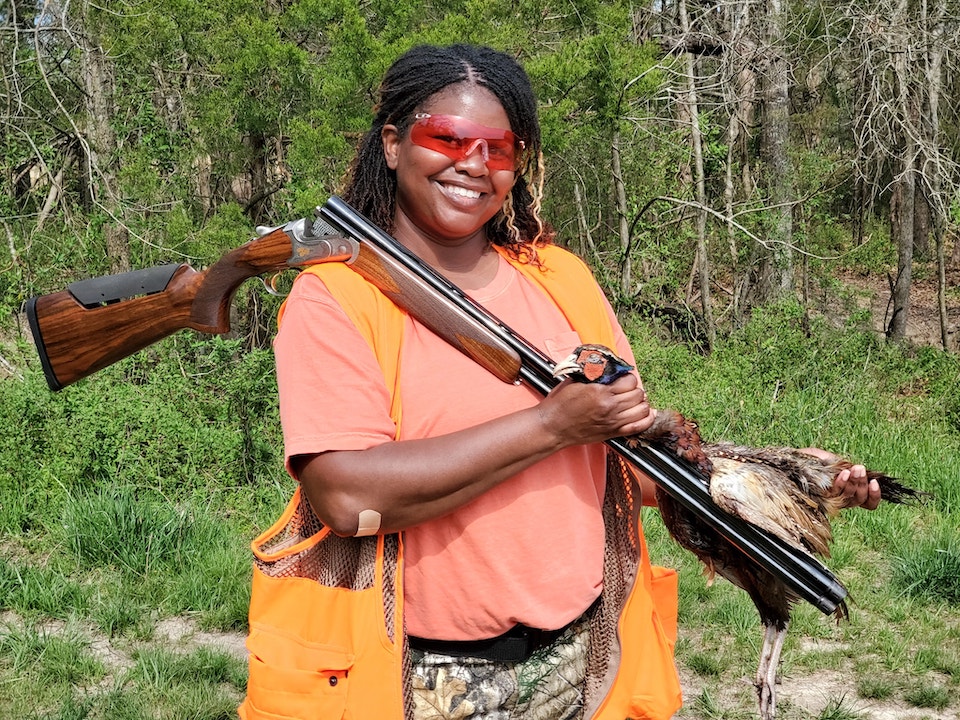
Since the weather is cooler, the leaves are falling and there is no time like the present, get your gear ready and those hunts booked! Be sure to share the experience with a friend or family member and let them enjoy the rewards of this phenomenal sport with you.
Need a gun for your upland hunts? Check out the line of Syren shotguns for women.
Kate Ahnstrom, owner of Virginia Shooting Sports, is a certified, professional instructor of the Paragon School of Sporting. She has dedicated her life to sharing her passion for the outdoors and diversifying the dynamics on the clay course and the hunt field. Her tireless dedication to her students’ success is obvious in each and every lesson. Kate is on the pro staff for Syren, the resident pro at Orapax Hunting Preserve and the Preserve at Dundee, department editor for “Woods and Waters” magazine and field staff member of the Sisterhood of the Outdoors. She and her husband, Mike, enjoy their small farm in central Virginia where they have a menagerie of animals and plenty of room to train and work their beloved GSPs. Kate loves getting behind the barrel of her Syren Tempio Sporting in 20 gauge for all things clay and feathered. View all posts by Kate Ahnstrom